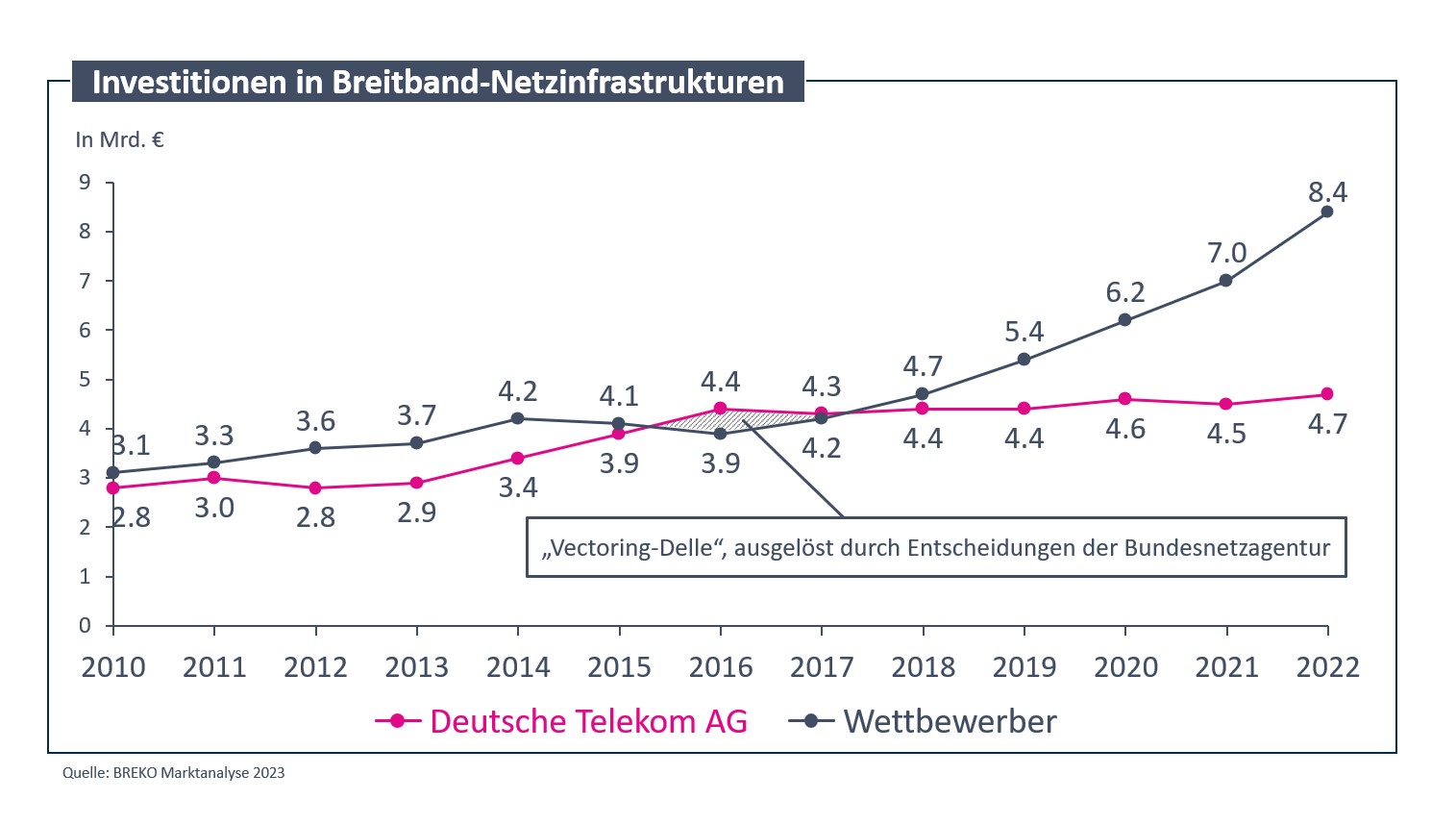10 years of vectoring: No reason to celebrate!
Bonn, 12.08.2024 On August 28, 2014, Deutsche Telekom began marketing DSL connections with vectoring technology. On the tenth anniversary of this bridging technology, the German Broadband Association (BREKO) draws a sobering conclusion and calls for a clear concept for the transition from copper to fiber optic networks.
Fast Internet even without fiber optics: this was the motto under which Deutsche Telekom launched its vectoring technology ten years ago. The maximum DSL speed was gradually increased to 250 Mbit/s for downloads and 40 Mbit/s for uploads. Far below the possible bandwidths of a fiber optic connection, which also offers a more stable connection and lower energy consumption than a VDSL connection.
Thanks to the technical requirements of vectoring technology, Telekom was able to minimize competition on the “last mile” – the copper line from the distribution box to the home – and maximize its profits on the basis of the old infrastructure. At the same time, this was in line with the goal of the German government at the time to offer 50 Mbit lines everywhere in Germany “as soon as possible”.
Instead of supporting the expansion of a future-proof fiber optic infrastructure, which is practically scalable at will, federal policy attempted to achieve short-term, unambitious bandwidth targets by upgrading the existing copper networks.
Ten years later, BREKO Managing Director Dr. Stephan Albers notes that his prediction from back then has come true: “Vectoring was a dead end that Germany would have been better off not turning down in the first place. For far too long, politicians and Telekom have concentrated on squeezing out the last reserves in the copper network and promoting vectoring through regulation. As a result, they have neglected and even actively slowed down the expansion of future-proof fiber optics to buildings and homes.”
While Telekom pushed ahead with the upgrade of its DSL network with the support of the Federal Network Agency, competitors were unsettled and reduced their investments for the first time in 2015 and 2016 after years of growth. Even then, they were the ones driving the expansion of fiber optic networks into buildings (FTTB) and homes (FTTH).
Albers: “The Federal Government and the Federal Network Agency should act with more foresight this time: A swift, gradual and competition-compliant shutdown of the copper network can give an important boost to the nationwide expansion of fiber optics for the benefit of consumers. We expect the Federal Network Agency to present its own concept for a competitive copper-fiber optic migration very quickly. This concept must also ensure a rapid copper switch-off in areas where Telekom’s competitors have expanded fiber optic networks and prevent Telekom from strategically switching off its copper network only in areas where it has laid fiber optics itself. We at BREKO already provided a template for this in April.”
Enclosed you will find a graphic from the BREKO Market Analysis 2023, which illustrates the decline in investment in 2015 and 2016.
About BREKO
Als führender Glasfaserverband mit mehr als 510 Mitgliedsunternehmen setzt sich der Bundesverband Breitbandkommunikation e.V. (BREKO) erfolgreich für den Wettbewerb im deutschen Telekommunikationsmarkt ein. Seine Mitglieder setzen klar auf die zukunftssichere Glasfaser und zeichnen für mehr als die Hälfte des Ausbaus von Glasfaseranschlüssen in Deutschland verantwortlich. Die über 260 im Verband organisierten Telekommunikations-Netzbetreiber versorgen sowohl Ballungsräume als auch ländliche Gebiete mit zukunftssicheren Glasfaseranschlüssen. Im Jahr 2023 haben sie dafür 4,8 Milliarden Euro investiert. Weitere Informationen finden Sie unter brekoverband.de.
